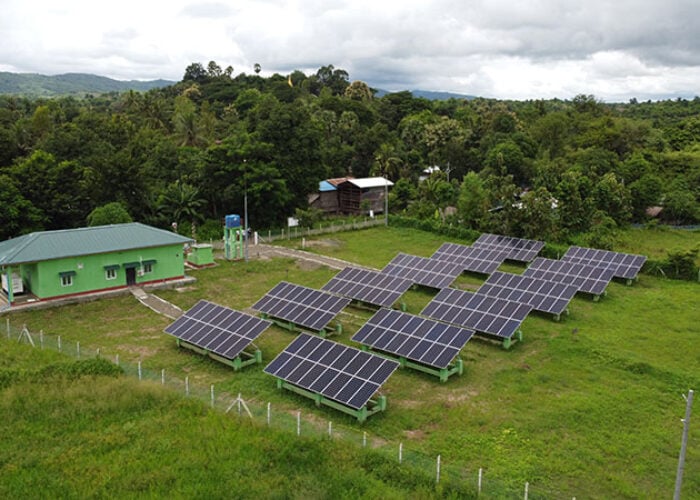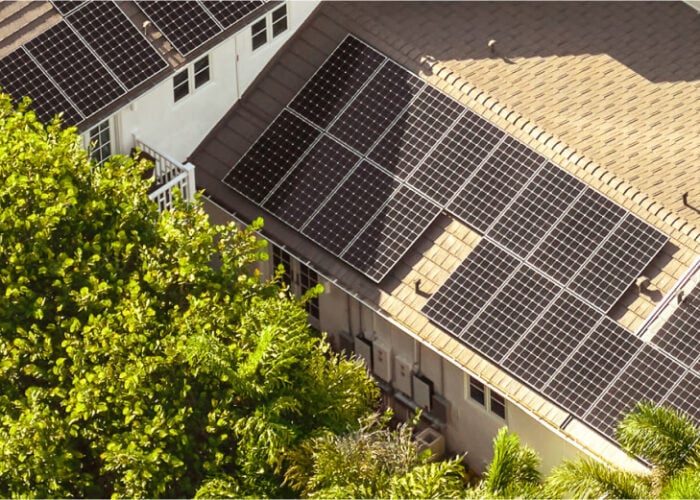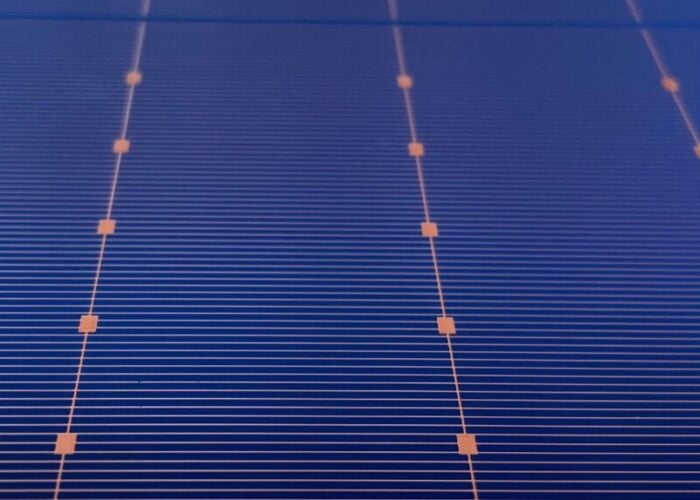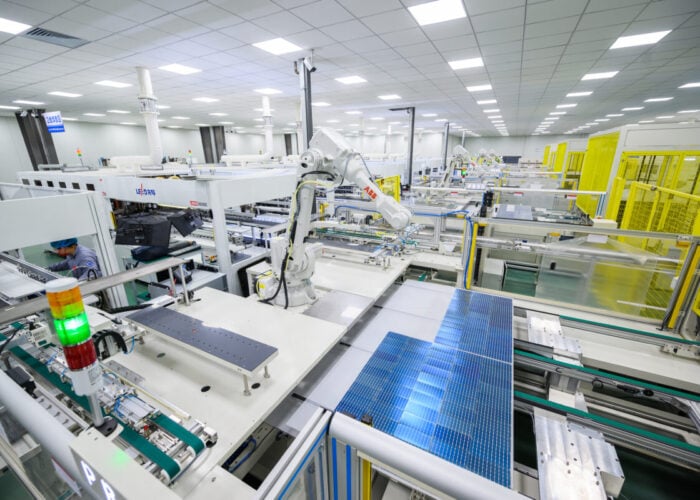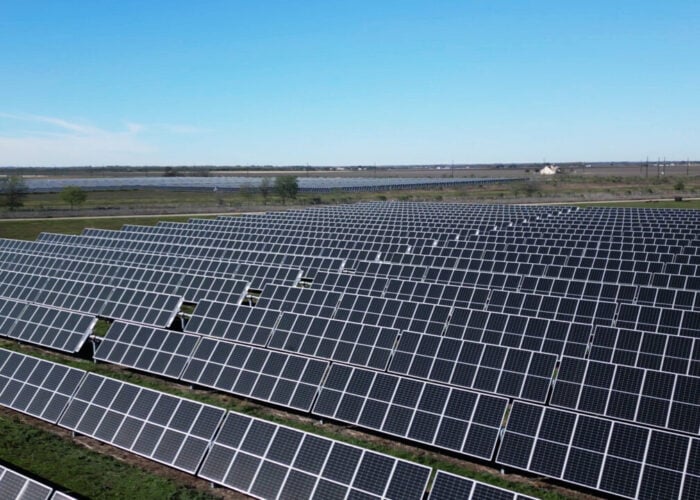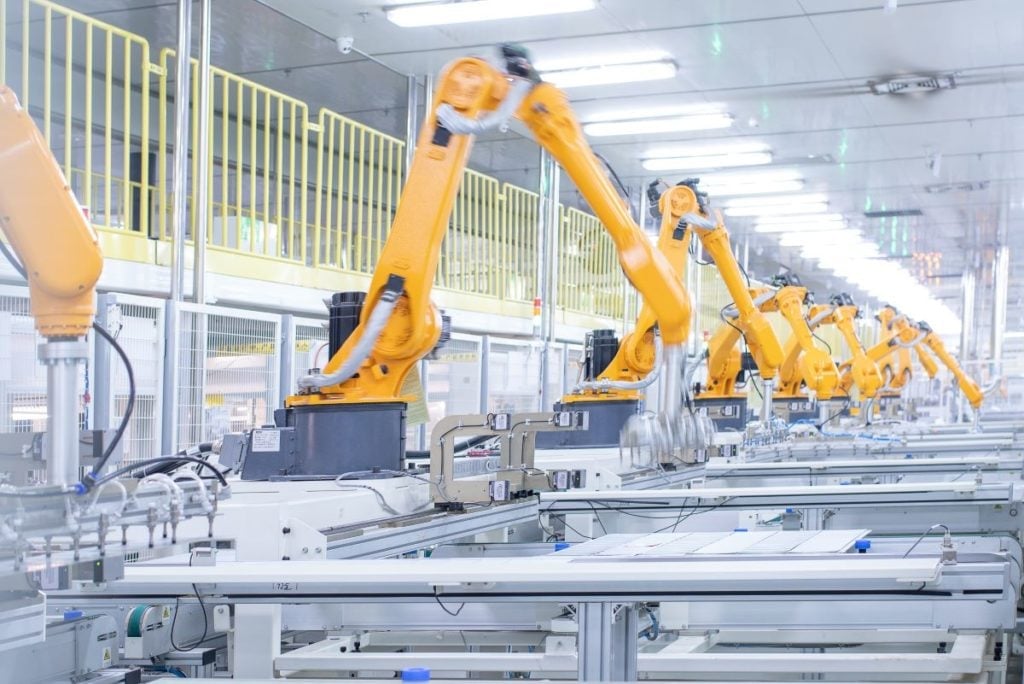
Chinese solar manufacturing giant JinkoSolar posted net losses of US$181.7 million in the first quarter of 2025 amid low product prices and “changes in international trade policies.”
The company posted lower revenues in the first quarter of 2025 than in both Q4 and Q1 2024. They were down to RMB13.84 billion (US$1.91 billion), a 33% sequential fall and a 39.9% year-on-year (YoY) decline. The sequential decrease was due to lower module shipments, JinkoSolar said, while the YoY decline was “mainly due” to falling average selling price (ASP) of modules.
Unlock unlimited access for 12 whole months of distinctive global analysis
Photovoltaics International is now included.
- Regular insight and analysis of the industry’s biggest developments
- In-depth interviews with the industry’s leading figures
- Unlimited digital access to the PV Tech Power journal catalogue
- Unlimited digital access to the Photovoltaics International journal catalogue
- Access to more than 1,000 technical papers
- Discounts on Solar Media’s portfolio of events, in-person and virtual
Or continue reading this article for free
JinkoSolar shipped 17.5GW of modules in Q1 2025 and 1.626GW of cells and wafers, down 27.7% sequentially and 12.7% YoY.
Low module prices have affected all of the major Chinese solar manufacturers over the last year, despite growing global shipments and demand. For example, Jinko’s 2024 full-year report shows record module shipment volumes of over 99GW, while also marking the first time that the company returned net losses in the last five years.
JinkoSolar CEO Xiande Li said: “Prices across the main segments of the solar industrial chain were low in the first quarter. This, combined with disruptions in demand caused by changes in international trade policies, pressured profit margins in each segment of the integrated solar supply chain.”
Li highlighted divergence between Jinko’s domestic market and international ones. He explained Jinko had seen growth in its home market of China, where he claimed: “Market self-regulation and high-quality development initiatives by manufacturers became gradually effective. From January to March, average monthly bidding prices for solar modules steadily recovered in the domestic market, returning to a more rational level.”
The heads of Chinese solar manufacturers have increasingly been calling for an end to the “price war”, which has seen manufacturing volumes explode beyond global demand while ASPs have dropped substantially.
“According to data from the National Environment Administration, new installations in China in the first quarter amounted to 59.7 GW, an increase of 31% year-over-year,” he said.
Conversely, Li said: “Due to a year-over-year decline in shipments to the US market and a continued decline in higher-price overseas orders, our module prices and profitability decreased both year-over-year and sequentially.
“Recent changes in international trade policies, such as reciprocal tariffs in the United States, have brought some disruption to the PV industry.”
In the days following Donald Trump’s “Liberation Day” tariff announcement, PV Tech reported that Chinese solar stocks had been hit hard.
2025 outlook
Li said Jinkosolar expects production capacity of mono wafers, solar cells and solar module to reach 120GW, 90GW and 130GW, respectively, with between 40GW and 50GW of module production capacity earmarked for “third generation TOPCon modules”.
The company said it expects to ship 20GW-25GW of modules in Q2 2025 and between 85GW and 100GW over the whole year.

